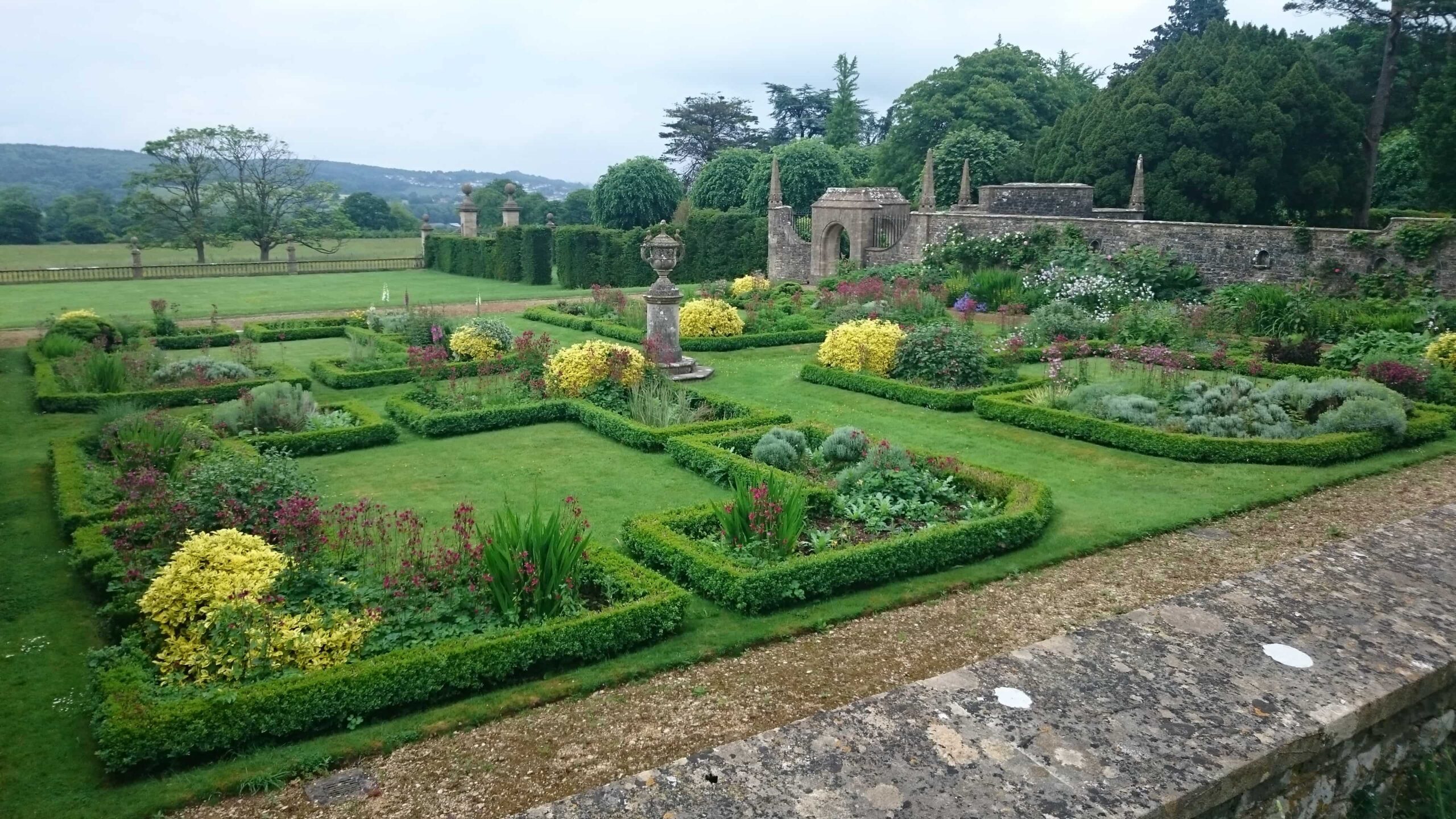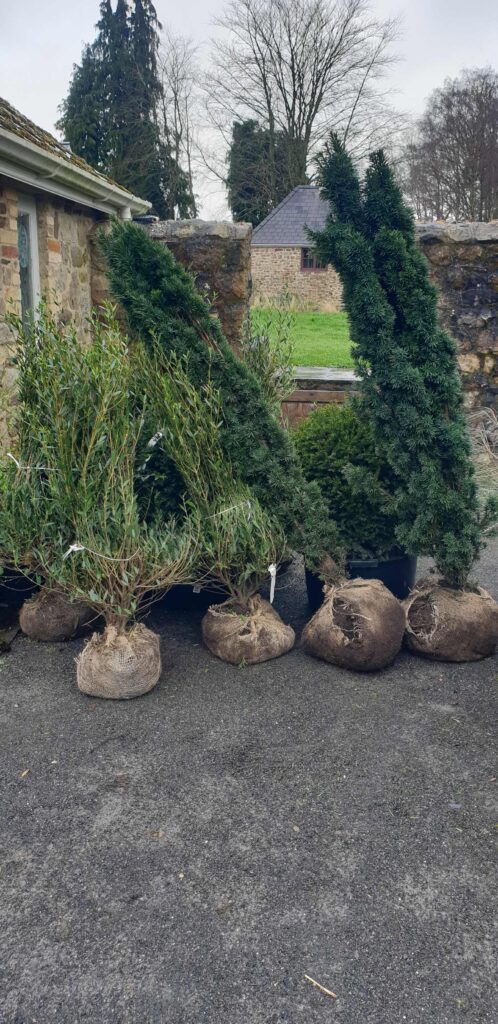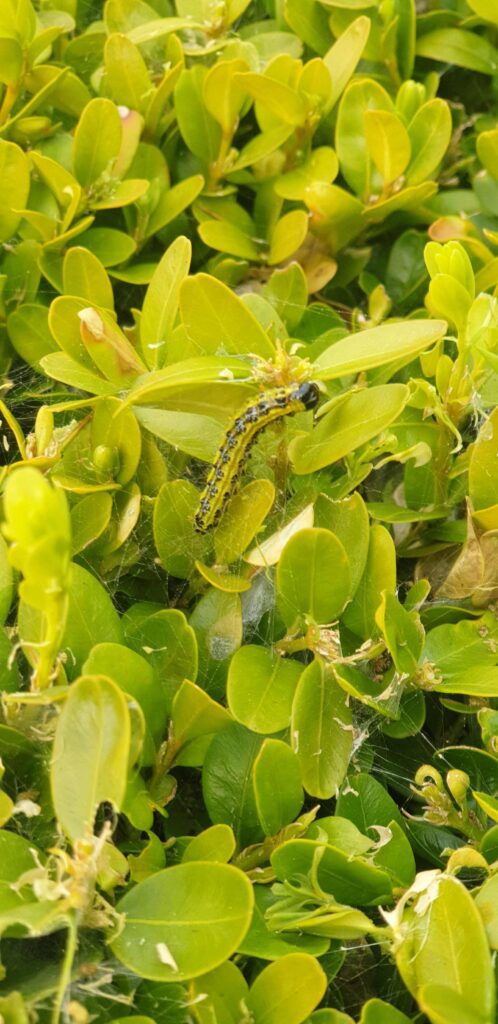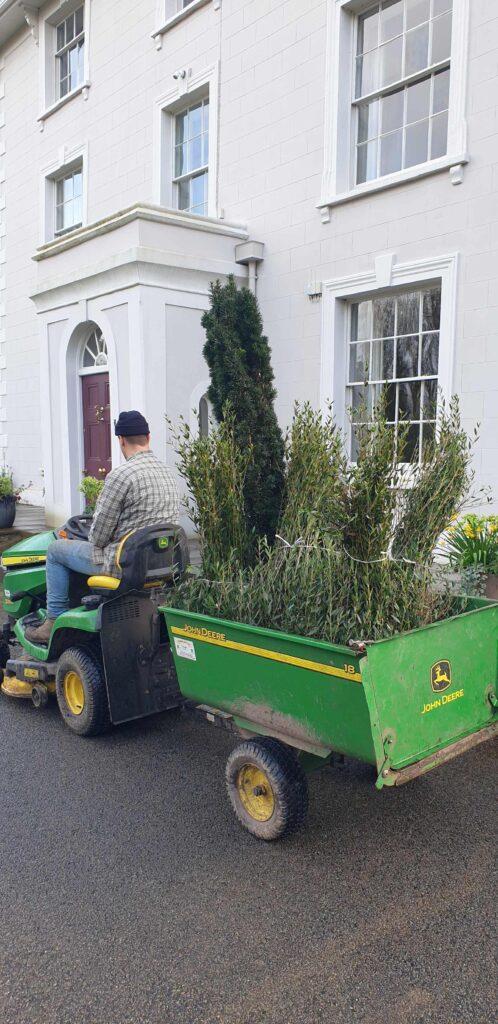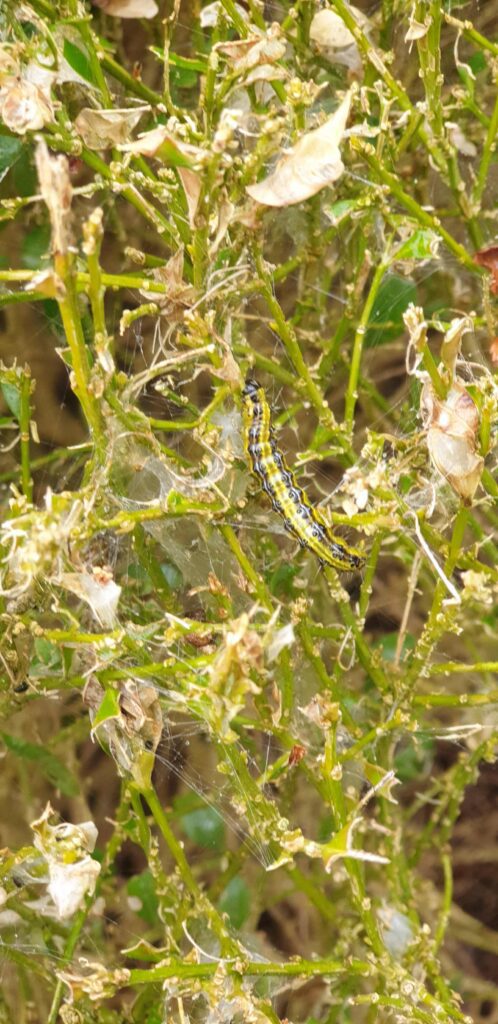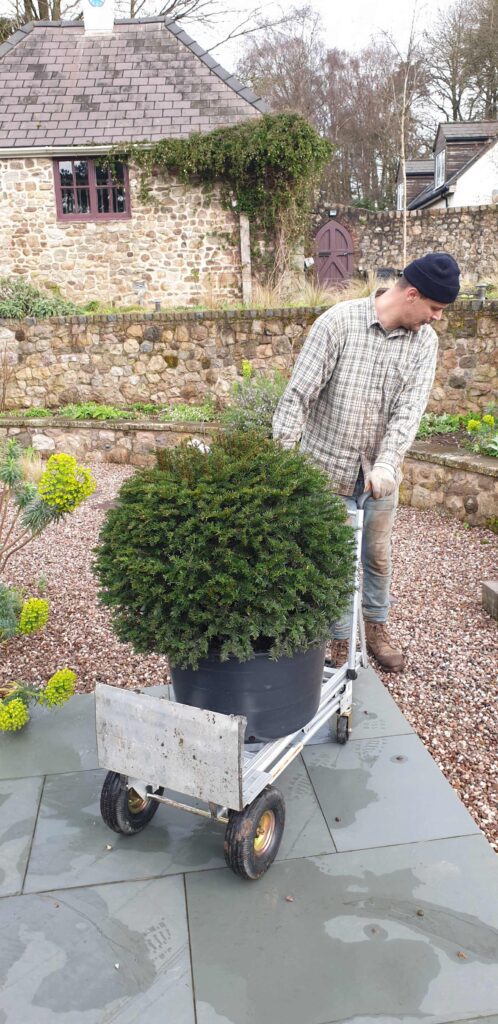Evergreen Structure for Year Round Interest
The strong architecture of clipped evergreens is an important feature for a lot of gardens and a lot of clients. Other than being winter green, one of their strongest features is how they provide a framework for more dynamic herbaceous planting. However, the question asked, is green a colour we are in short supply of in the UK? Over winter the colour and structure of dogwoods, willows, ornamental grasses, herbaceous seedheads can be as decorative as static evergreens. I guess I’d better lay my cards on the table; I do consider the ‘notoriously malodorous’ Box, Buxus sempervirens, to be an ‘evil & loathsome’ plant. 400 year old opinions but still relevant today. My prejudice comes from having to regularly trim half a kilometre of box hedging, part of the regular maintenance of a Victorian parterre at Barrow Court in North Somerset.
Maintenance of A Victorian Box Parterre
Managing the Box Parterre at Barrow Court during my original tenure (2011-18) was focused around the sporadic but firmly established outbreaks of Box Blight. It was decided to shift to winter cutting, avoiding the times of year when the fungus responsible for Box blight was active. One of the species responsible for the disease can spread voraciously through the cut leaves that result from trimming. Cutting during the dormant season, in theory, eliminated this risk. Box is hardy enough to recover from any frost damage – more so than from the fungal disease.
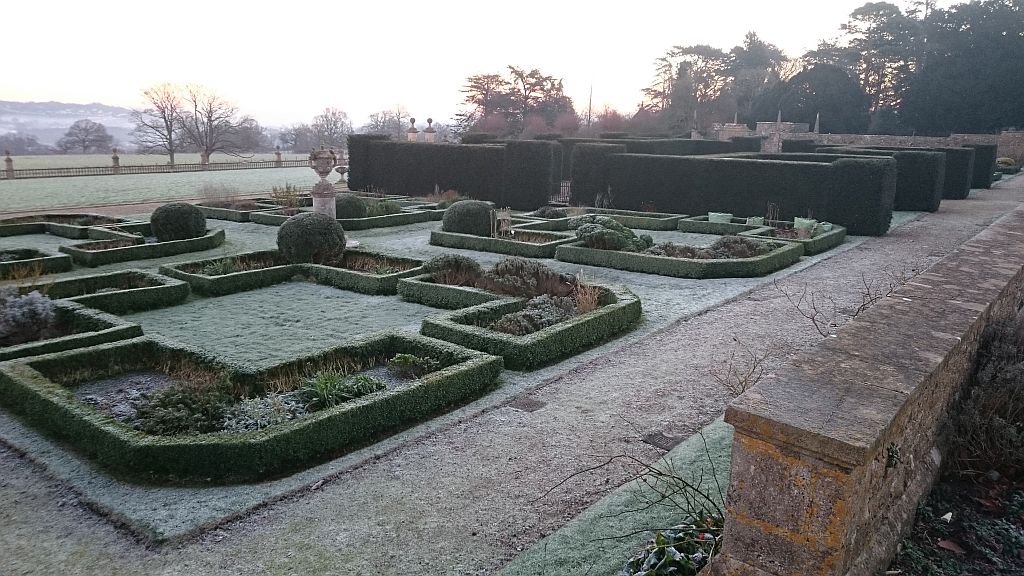
Specialists were contracted to apply a fungicide spray seasonally but the impacts on the environment of these toxic pesticides are significant. The Blight is still present today.
Having recently returned to Barrow Court (Autumn 2023) currently my focus is on restoration of the parterre borders, Ed Butler and his motley crew now strive to make the box hedging itself look good. It’s interesting to see the original design of the Victorian parterres at Barrow Court where Box was originally not used. The geometric arrangement of flower beds, overlooked by the main house were planted solely with herbaceous perennials. The designer, F. Inigo Thomas (1865-1950) hated Victorian bedding and looked to ‘old-fashioned’ flowers to decorate his formal designs. A Victorian re-creation of an Elizabethan garden.
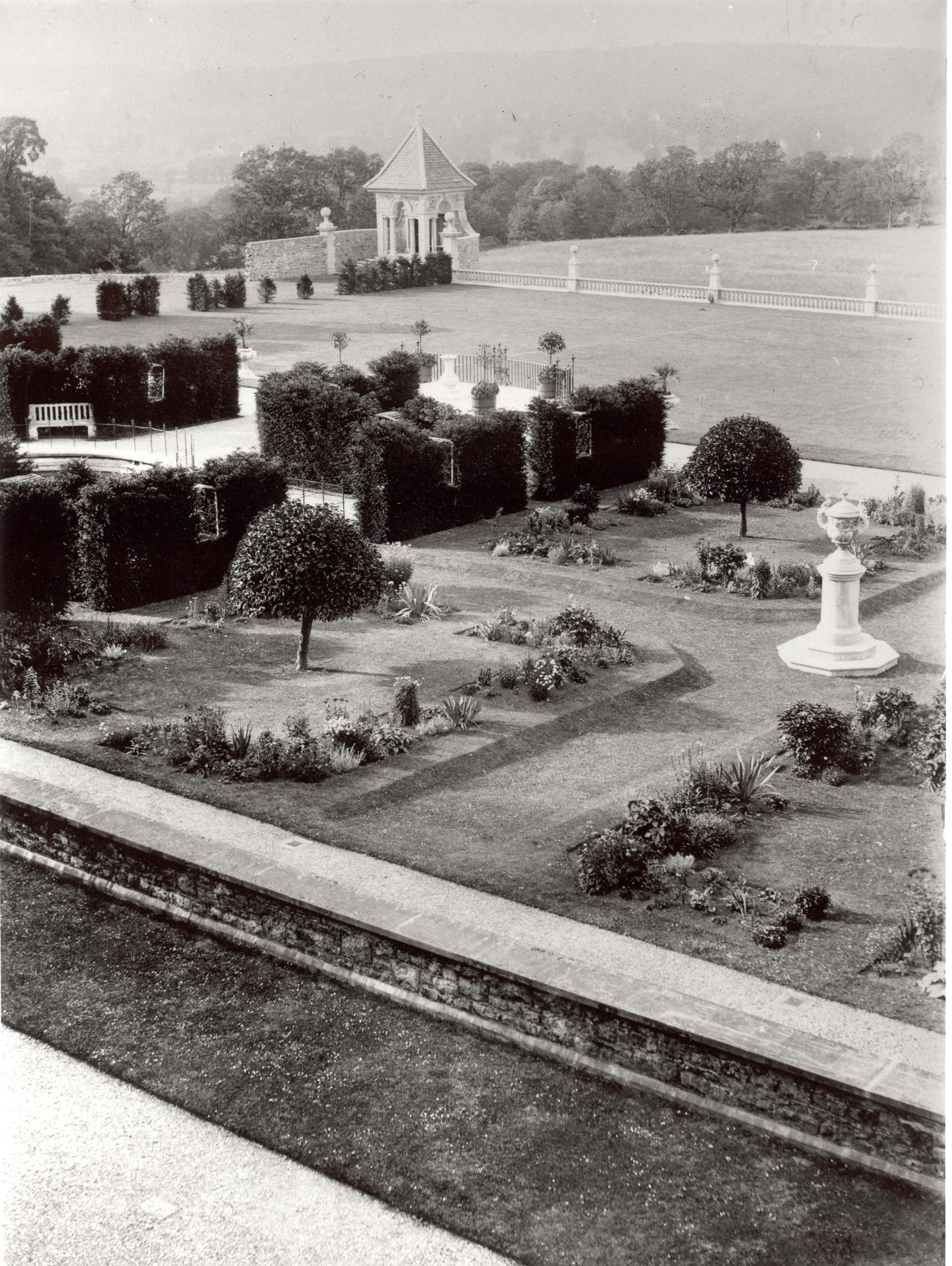
Evergreens have always been held in high value in the garden. John Parkinson’s Paradisi in Sole Paradisus Terrestris (a play on the authors name, The Terrestrial Paradise of the Park-in-the-Sun) published in 1629 included comprehensive details of plants used solely for the pleasure garden, featuring designs for knot gardens. These included borders of privet, sweet briar, whitethorn, roses, lavender, rosemary, sage, southernwood, cotton lavender or pyracantha. The knots and ‘trayles’ within are defined by herbs and shrubs of which thrift was singled out for its value as an evergreen bushy herb easily trimmed with shears. Other recommendations were hyssop, germander, marjoram, savoury and thyme and especially cotton lavender. His particular recommendation however is kept for box (rare & novel in the early 17th century) principally because it is evergreen, hardy, long lived and low maintenance. The edges of the surrounding border and the beds and trayles within were to be defined with lead (good for bending to the shape of your knot), oak boards (reserved for those knots comprised solely of straight lines), pebbles and, particularly impressive, the bones of sheep which, Parkinson insists will ‘prettily grace the ground’. I’ve not convinced anyone to use left over bones from the Sunday roast for border edging yet. There is always time. An important note about these designs was that after 3 years they were generally past there best and needed replacing with new plants.
Box Moth Caterpillar Cydalima perspectalis
First reported in the UK in 2007, the Box Moth has replaced Box Blight as its principal pest and disease. In some of our gardens, particularly in South Gloucestershire, Spring 2024, it is rife.
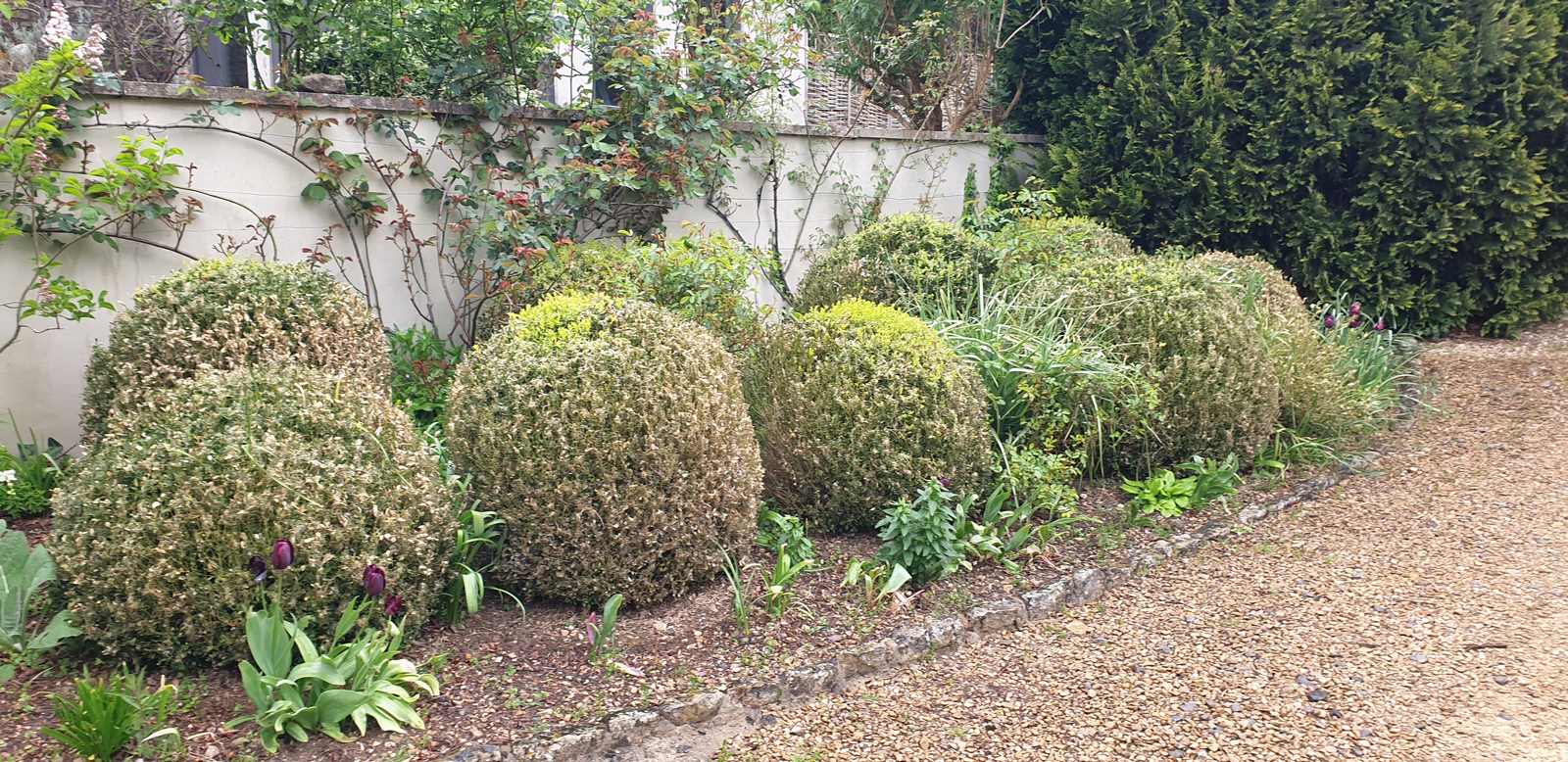
The Box balls above will be completely bare in no time.
Below a medley of Box Moth Larvae and some replacement planting of topiary specimens. Phillyrea particularly looking good.
Pheromone traps, nematodes, biological insecticides, health mixes; a flourishing industry has developed around Box with an arsenal of products available to manage the impact of blight and the caterpillar, though its troublesome that major outlets still sell products that aren’t approved for use in UK amenity situations; products that are non selective when it comes to insect larvae control, killing all moth & butterfly larvae. DiPel a non selective biological insecticide was the only pesticide approved for control of Box Moth Caterpillar to be used by suitably qualified operators. Box T Pro appeared in 2023 and is “a mating disruption system for managing box tree caterpillar. It is an approved and registered professional plant protection product for use by staff qualified to use professional plant protection products. Used in conjunction with other controls, part of an Integrated Pest Management programme”.
If the box topiary or parterre is a significant feature then its worth investing these resources into its continued health. The financial and ecological impact must be taken into account though which is why a number of our gardens are looking at Box alternatives.

